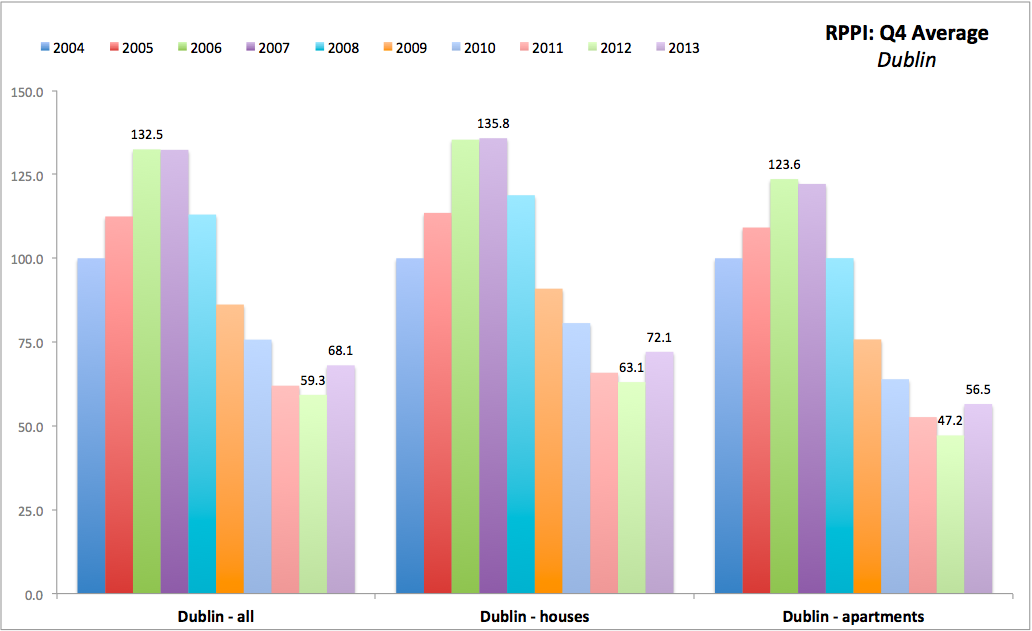It has been an ugly decade for Ireland's building and construction industry. especially for housing. Following a historically massive bust in 2009-2012, indices of total production in the housing sub-sector fell from the pre-crisis high of 751.7 for value and 820 for volume, attained in 2006, to their lowest cyclical points of 57.9 and 59.5, respectively, in 2012. In other words, from 2006 through 2012, Irish residential building and construction production fell a massive, gargantuan, non-Solar-System-like 92.3% in value terms and 92.74% in volume terms. That was bad.
The recovery has not been any better. Since the lowest point of the cycle in 2012, through 2018, based on the latest figures from CSO, value of production in residential construction sector rose to 186.6, an uplift of 222.3% and volume rose to 176.9 (a rise of 197.3%). Still, compared to pre-crisis peak, current value of production in Ireland's residential building and construction sub-sector is down 75.2%, still, and in volume terms it is down 78.4%.
Of course, comparatives to the peak production year would be subject to criticism that things should be benchmarked by something 'other' than the levels of activity achieved during the bubble. I disagree. Back in the days of the bubble, Ireland experienced rampant house price inflation, as demand was still lagging behind supply. But, let me entertain, as in the above chart, an argument about averages over two periods: the period of the pre-bust activity and the period of the recovery activity.
Ireland today has an acute crisis in the supply of homes. There is no question about that. What 2018 figure shows, however, is far worse. In 2018, value of production in residential construction sector in Ireland grew by only 6.88% y/y - the slowest pace of growth since the recovery started in 2013. By volume, activity grew only 3.75% y/y in 2018 - also the slowest pace for the recovery period. As the crisis in supply of homes get worse, the rates of growth in the 'recovering' sector get shallower. This suggests that Irish residential construction is nowhere near the trajectory needed to achieve the rates of growth required to fill the gap in the housing supply.
In all 12 years of positive growth (between 2000 and 2018), last year marked the worst rate of growth in Value and the second worst year of growth in Volume terms. To put things into perspective: under 2018 growth rates, Irish residential building and construction production won't reach its 2000-2007 average levels until mid-2033 in value terms and mid-2052 in volume terms.























































